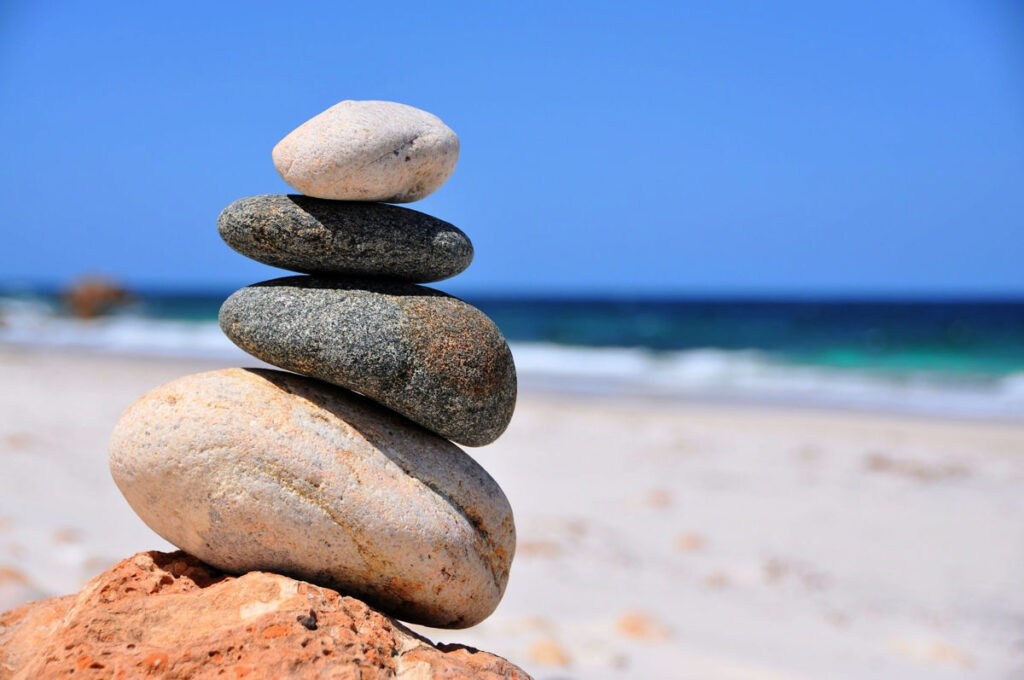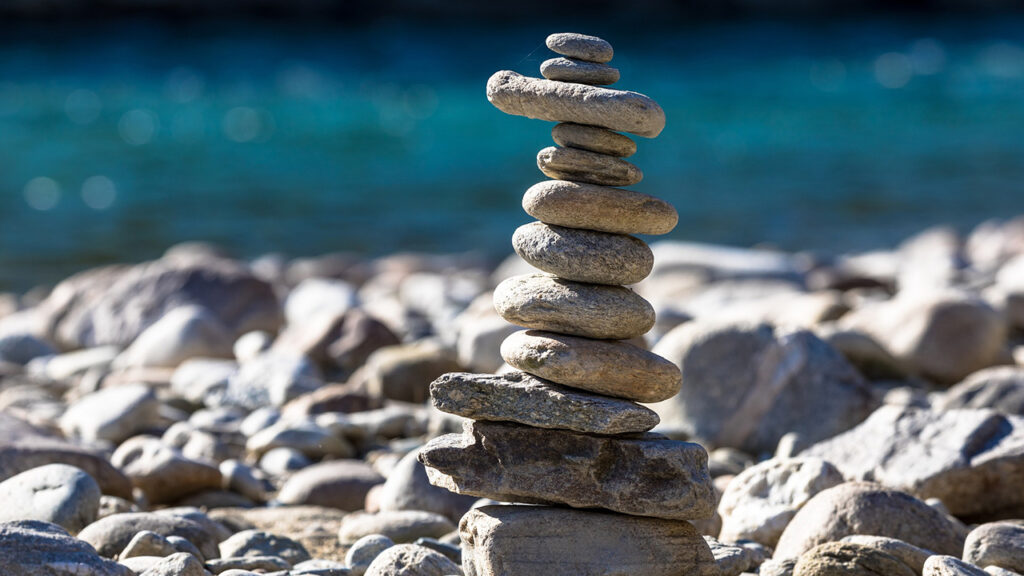
When you’re out on a scenic hike, the world around you is filled with awe-inspiring landscapes, fresh air, and a sense of serenity. However, one growing trend in the outdoors—stacking rocks or building cairns—can harm the environment in ways that you might not realize.
In this article, we’ll explore why stacking rocks on hikes is not as harmless as it seems, what cairns actually represent, and what you should do if you encounter them on your trail. Whether you’re a seasoned hiker or a nature enthusiast, it’s essential to understand the risks associated with this practice and learn how you can protect the fragile ecosystems around you.

What Are Rock Cairns and Why Are They There?
A cairn (pronounced “kern”) is a pile or stack of stones, typically used to mark a trail or serve as a navigation aid for hikers. These ancient markers date back centuries, with uses ranging from ceremonial sites to guiding travelers through remote areas. In modern hiking, cairns are often used as trail markers on difficult or confusing paths, ensuring that hikers stay on the right track.
But what happens when these markers are used for non-navigational purposes? Recently, it’s become common to see decorative cairns along popular hiking routes. People have started stacking rocks just for the aesthetic or Instagram-worthy photo opportunities, contributing to the proliferation of unauthorized cairns along trails. While they may seem harmless, the creation of these rock formations can lead to significant environmental damage.
The Dangers of Stacking Rocks on Hiking Trails

1. Disrupting Local Wildlife
One of the most significant impacts of stacking rocks is that it disrupts the natural habitats of local wildlife. When rocks are moved to build cairns, you may unknowingly disturb the homes of small creatures that rely on those rocks for shelter. Insects, lizards, and even small mammals often seek refuge under rocks. By disturbing or removing these stones, you may displace these animals, leaving them vulnerable to predators or harsh conditions.

2. Contributing to Soil Erosion
The process of stacking rocks can also contribute to soil erosion, a problem that can be exacerbated by the increased foot traffic that comes with it. Rocks in their natural state play an essential role in stabilizing the soil. When people move them around, the structural integrity of the terrain is compromised. This can lead to increased runoff, washing away vital nutrients, and even damaging sensitive vegetation.

3. Confusing Hikers and Causing Disorientation
In some cases, cairns are intentionally created by well-meaning hikers or locals to help others find their way. However, the unauthorized construction of cairns can confuse hikers, especially in areas where there are already established markers. According to the National Park Service, adding or modifying cairns can create disorientation, causing people to stray from the proper trail. While a cairn might seem like a helpful navigation tool, it can easily lead to mistakes, leaving hikers in dangerous or unfamiliar terrain.

4. Breaking the ‘Leave No Trace’ Principle
The Leave No Trace (LNT) principles emphasize the importance of leaving natural areas as you found them, minimizing your impact on the environment. Moving rocks to build cairns or even adding to existing ones goes against these principles. It’s important to remember that nature thrives when it’s left undisturbed. Cairn stacking, no matter how well-intentioned, creates a footprint on the land that’s difficult to undo.

Where Did Cairns Come From?
The practice of building cairns as trail markers can be traced back to Waldron Bates, a hiking trail expert who developed standards for trail markers in the late 1800s. Bates is credited with popularizing the “Bates Cairn,” a more structured and purposeful method of rock stacking that was meant to help hikers navigate remote paths. While cairns still serve this essential purpose today, the more recent trend of creating decorative piles of stones adds little value to the hiking experience and can even be harmful to the environment.

What Should You Do If You See a Rock Cairn?
If you encounter a cairn during your hike, the best course of action is to leave it alone. Here’s what you should do:
- Don’t build or add to cairns: Modifying or adding rocks to an existing cairn can contribute to the confusion and environmental harm discussed earlier.
- Don’t knock them over: It might seem tempting to kick over a cairn to prevent others from adding to it, but this can cause unnecessary disruption to the environment.
- Report unauthorized cairns: If you’re hiking in a national park or protected area, it’s a good idea to report any unauthorized cairns to park rangers or trail managers. They can assess the situation and determine the best course of action.
- Follow established trail markers: Always trust official trail markers and carry proper navigation tools like a GPS or a map to help you find your way.

Why Should You Care About Cairns?
If you’re an avid hiker or just someone who enjoys spending time outdoors, understanding the impact of cairns is crucial for preserving the natural beauty of the environment. The National Park Service warns that unauthorized cairns can damage ecosystems, disrupt wildlife, and make trails more difficult to follow. By respecting nature and sticking to proper trail markers, you’re helping to ensure that future generations can enjoy the same pristine landscapes you do today.

Stop Taking the Natural World for Granite
While the trend of stacking rocks on hikes may seem harmless or even fun, it’s essential to consider the lasting consequences on the environment. From disturbing wildlife habitats to contributing to soil erosion and disorienting fellow hikers, cairns can have a much larger impact than you might think. The next time you encounter a cairn on your hike, remember: nature isn’t something to be played with. Stick to established trail markers, leave no trace, and help protect the delicate ecosystems that make our outdoor spaces so special.

Through the years I saw so,many of these in Hawaii. I had friends who built them. Even when one guy moved to the mainland..he built one under the water!
I have lived in Norway now for over 15 years the main sports are skiing, football(soccer) and hiking. The top of the mountains have a rest place or a mini cabin (if you want to stay) they have mail box with a pad in it to say you did the hike. At the end of the year, the person with the most and longest hikes wins something (not sure what..I was never in the running..haahaa)
I’m hawaii you find a rock wrapped in ti leaves on top of a rock , it’s a grave marker from long ago and should not be touched or you will have the worst nightmares. Ever!!
Carins were erected by Arctic explorers and whalers as far back as the early 18th century, many held weatherproof containers that acted as mail boxes or historical/geological points.
We have a spot on the NH seacoast just south of Odiorne State Park…below sea level there are hundreds of the stacked violations.
I dismantle every one I come across on public lands (non-government issue). I remove each stone and place it in an appropriate, nature-respectful location.
I do consider renegade carins an excrescence to be removed
Thank you for this article…where I live, people are taking hundreds of rocks and painting them with messages and pictures and leaving them on hiking trails for others to find….while I understand the intentions of this….I don’t think they understand the implications of the removal of all these stones and the harm the acrylic paints and varnishes can do…could you please do an article on this? Thank you…:)
Rock on
Judging by many of the comments a lot of people just don’t get it, a sad sign of attitude in todays world.
“I want to do what I want to do irregardless of the effect.”
They’re not confined to one generation or societal set.
All of the very best farmland and is now buried under cities of concrete, asphalt and excrement-where people live like caged rats and gerbils. Every weekend, millions get into their SUV’s and RV’s, and go to the countryside. That makes them experts on “nature” which must be “saved” because their cities have pretty much destroyed the natural world around them. Release wild grizzlies and wolves back into their original habitats….downtown skid row.
Stop judging
It’s actually illegal in Maine to build those..
When I venture out into the wilderness, I like to think I am the first one to experience the beauty. Coming upon a stone structure just reminds me that others were there. It takes away from the complete naturalness of the place. We should leave the wilderness as we find it…..natural.
The act of trekking through nature is an apocalypse by comparison.
I noticed these in Zion NP and yes, one is cute, hundreds ruin the experience.
In the far northern part of Canada the native people would built a small stone “man” called an Inukshuk it means “so they know we were here.
Stacking stones is meditative,it is artistic,it is a skill.It is beautiful to see. Your article is ridiculous.
There are so many more harmful things going on around. Sadly too many just cannot mind their own business. If this person cooks his food, he is doing more harm than folks stacking rocks… So give me a break “Ken”.
This was the dumbest article – wasted time where I could have been stacking rocks.
I find them beautiful.
Nature + human spirit is even better. Please don’t see human action as inherently evil.
For sure, hundred in the same place is a bit too much, but a few here and there is not bad in itself. It can remind you of the beauty in humanity and nature working together.
Another example of “I don’t like what you’re doing so it must be wrong and I am right.”
Great. Another thing to worry about.